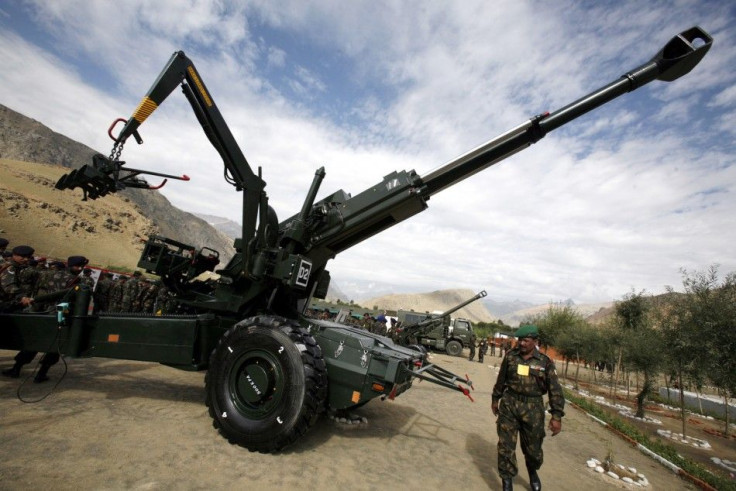Why Sacking DRDO Chief Is Unlikely To Help India Develop Better Weapons

NEW DELHI -- On Tuesday, the Indian government suddenly sacked Avinash Chander who was heading the Defence Research and Development Organisation (DRDO), the country’s premier defense research institution. Chander, whose contract was to end in 2016, was let go by the government because he was “too old” for the job, Defense Minister Manohar Parrikar told local journalists a day after his sacking, even as some media reports speculated he was removed because of complaints against him.
“We will find out someone good from the DRDO, who has the urge for development … We should introduce a slightly younger generation in the scientific world,” Parrikar told reporters, when asked about Chander’s successor, according to the Hindustan Times, a national newspaper. Chander, who had retired upon turning 60 was given an extended tenure at the agency, where allegations of corruption against several top officials have been persistent.
Although most DRDO insiders were tight-lipped about the issue, one former DRDO official said that he did not think complaints against the chief defense technocrat would have led to him being shown the door. “I think Parrikar’s reference to bringing someone younger would mean that the government had someone specific in mind to replace Chander. After all, often there are several complaints being made against senior officials by vested interests,” the official, who did not wish to be identified, told International Business Times. Speculation was rife that someone from India’s atomic energy establishment would replace Chander, the official said, but there has been no official word yet on the appointment.
“Age is a problem, as there are five more people who are on an extension. Then there are structural problems of the kind that our education system today is not producing very many people of that kind of temperament,” said retired Brigadier Rummel Dahiya, who now heads the New Delhi-based Institute for Defence Studies and Analysis (IDSA), a government-funded think tank. “Also, the best people would rather join the IITs (Indian Institutes of Technology) and IIMs (Indian Institutes of Management) than come to the DRDO, which is not their first choice of a career,” he added. The IITs and IIMs are considered the country's best engineering and business schools, respectively.
Only last week, India had announced the appointment of Chander’s predecessor, V K Saraswat, as a full-time member of its new economic policy think tank, the NITI Aayog, which replaced the over six-decade old Planning Commission that was set up by India’s first Prime Minister Jawaharlal Nehru.
While the government was reportedly upset with DRDO's inability to deliver on key critical projects over several decades, the former official cited above said that Chander’s replacement was unlikely to solve anything. “Frankly, even as the DRDO is massively overstaffed and has 55 laboratories, it does not have any cutting edge capability or the required talent in its workforce to deliver results,” the official said, though a parliamentary panel noted in December that the agency actually employs fewer scientists than it is sanctioned to.
And, though the parliamentary panel also found that, as a fraction of India’s Gross Domestic Product, the DRDO's research expenditure had actually declined in the last five years, the agency is not short of funds. On the other hand, the DRDO’s annual budget has actually tripled in the last decade to nearly $2 billion, according to this report. The DRDO has over 500 ongoing research projects in areas ranging from agriculture to mosquito repellants, and from battle tanks to fighter jets.
The agency has identified 20 key projects on which it wants to focus, following a panel's recommendation in 2008. Even though several short- and medium-range missile systems designed by DRDO engineers are now functional, for which both Saraswat and Chander are credited, marquee projects, like ones to develop an indigenous fighter jet and a battle tank, are still under development, decades after they began.
“Their projects on developing new varieties of seeds have succeeded more than critical defense projects,” the former DRDO official said. In August, soon after assuming office, Prime Minister Narendra Modi had criticized the DRDO for its performance.
“Cost and time overruns have been a problem,” Dahiya said.
And as India's indigenous arms development languishes, the country shops for arms in the international market. India is now the world’s largest arms importer and is expected to spend over $130 billion over the next seven years. Although much of India’s military hardware continues to be of Russian origin, the U.S. has now surpassed Russia as its biggest supplier.
Even as the government is looking at separating the offices of the DRDO chief and the scientific adviser to the defense minister, experts say it may not be sufficient to stem the rot within the agency.
As Dahiya of IDSA put it: “It's a hierarchical organization, so at the age of 30 you might discover something, but you will still not become director and will have to wait for your turn and seniority. Secondly, there are no scientific innovations existing in the country. So, there are certain constraints within which any director of DRDO will have to work.”
© Copyright IBTimes 2025. All rights reserved.



















